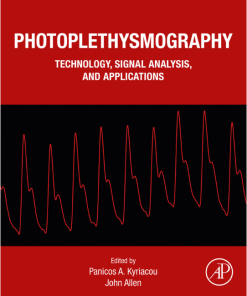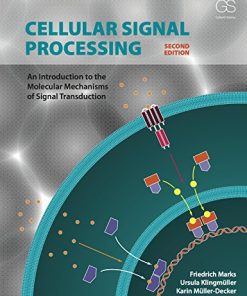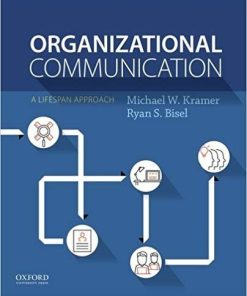Signal Transduction 3rd Edition by Kramer, Ijsbrand 0123948193 9780123948038 9780123948199
$50.00 Original price was: $50.00.$25.00Current price is: $25.00.
Signal Transduction 3rd Edition by Kramer, Ijsbrand M. – Ebook PDF Instant Download/DeliveryISBN: 0123948193, 9780123948038, 9780123948199
Full download Signal Transduction 3rd Edition after payment.
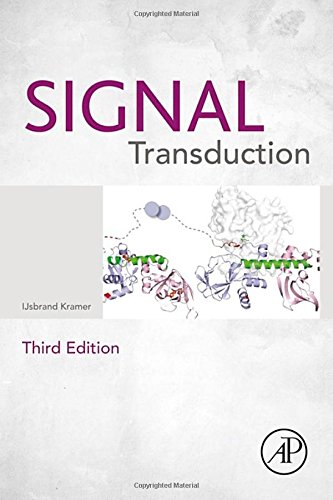
Product details:
ISBN-10 : 0123948193
ISBN-13 : 9780123948199, 9780123948038
Author : Kramer, Ijsbrand M.
Signal Transduction, Third Edition is a thorough, well-illustrated study in cellular signaling processes. Beginning with the basics, this book shows how cells respond to external cues, hormones, growth factors, cytokines, cell surfaces, etc., and further instructs how these inputs are integrated.
Instruction continues with up-to-date, inclusive coverage of intracellular calcium, nuclear receptors, tyrosine protein kinases and adaptive immunity, and targeting transduction pathways for research and medical intervention. This book will serve as an invaluable resource for advanced undergraduates, graduate researchers, and established scientists working in cell biology, pharmacology, immunology, and related fields.
Signal Transduction 3rd Table of contents:
Chapter 1. Prologue: Signal Transduction from an Historical Perspective
Transduction, the word and its meaning
Irritability, a vital phenomenon
Protoendocrinologists
Hormones and neurotransmitters
The receptive substance
Proto-messengers and -receptors
Growth factors: setting the framework
Problems with nomenclature
Chapter 2. An Introduction to Signal Transduction
Cells need ways to create symbolic representations of their (changing) environment
First messengers
First-messenger signals are ambiguous: their meaning is embedded in context
The plasma membrane barrier, membrane receptors, and signal transduction
Receptors and their ligands
Five types of receptors
Signaling mechanisms
Wired allostery and thoughtful decisions
Posttranslational modifications involved in signaling events
Focus on nucleotide exchange
A brief definition of effectors
Focus on protein phosphorylation
Protein kinases catalyze the phosphate transfer
Protein domains, their folds, and their graphic representations
Which amino acids are susceptible to phosphorylation?
Bacterial exceptions: phosphoenolpyruvate as phosphate donor and histidine kinases as environmental sensors
Substrate phosphorylation motifs and distal docking sites
Protein kinase activation mechanisms
Protein phosphatases
PPP1R12A (MYPT1) as an example of how a regulatory subunit controls substrate selectivity (of PP1CC)
Regulation by intramolecular domain interaction, the example of PTPN6 (SHP-1)
Decision-making in glycogen synthesis and breakdown: concerted action of kinases and phosphatases
Signal termination
Chapter 3. Regulation of Muscle Contraction by Adrenoceptors
Catecholamines
α- and β-adrenoceptors
Adrenaline-binding and G-protein-coupling mechanisms
Adrenoceptor agonists, antagonists, and inverse agonists
How do ligand-binding characteristics translate into signaling effects?
Adenylyl cyclase
cAMP-binding proteins
Phospholipase C
Muscle contraction: striated versus smooth muscle
Contraction waves in the heart
Adrenaline as a cardiac ino- and chronotrope messenger
Arresting the β-adrenoreceptor signal: pathway switching and the role of G-protein receptor kinase and arrestin
α1-adrenoceptors and visceral vasoconstriction
Adrenaline (again)
Chapter 4. Cholinergic Signaling and Muscle Contraction
Acetylcholine
Cholinergic receptor subtypes; nicotinic and muscarinic
Nicotinic acetylcholine receptors
Muscarinic acetylcholine receptors
Type IV nicotinic AChR induces skeletal muscle contraction
Acetylcholine, acting on the M2-receptor, reduces force and slows down the heart rate
Phosphodiesterases
Acetylcholine, acting on the M3 receptor, causes airway constriction and mucus secretion
Acetylcholine and the induction of nitric oxide, a potent vasodilator
Neurotransmitters that function with both ionotropic and metabotropic signaling mechanisms
Chapter 5. Sensory Signal Processing; Visual Transduction and Olfaction
Visual transduction
Ocular photoreceptor cells
Photoreceptor mechanisms
Electric activity of rod cells
Sensitivity of photoreceptors and adaptation to changing light intensities
Note on phototransduction in invertebrates
Olfaction
Olfactory epithelium
Odorant receptor signaling
Other signaling pathways involved in chemosensing
Pheromone reviews
The GPCR superfamily
Chapter 6. Intracellular Calcium
A new second messenger is discovered
Free, bound, and trapped Ca2+
Cytosolic Ca2+ is kept low
Ca2+-binding proteins
Ca2+ receptors
Ca2+/calmodulin-mediated regulation of protein activity
Tools to study the role of Ca2+ in cellular processes
Mechanisms that elevate cytosol Ca2+ concentration
Decoding Ca2+ oscillations
Mobilizing Ca2+ through cyclic ADP ribose, NAADP, and sphingosine-1-phosphate
Ca2+ in action
Michael Abercrombie a pioneer in cell migration
Chapter 7. Bringing the Signal into the Nucleus: Regulation of Gene Expression
Gluconeogenesis
Glucagon and glucocorticoids augment gluconeogenesis
Signaling through the glucagon receptor
Protein kinase A
AKAP, anchoring and scaffolding
Activation of PKA by cAMP
PKA substrates involved in gluconeogenesis
CREB, a nuclear target of PKA
CREB is member of the basic leucine zipper (bZIP) family of proteins
Transcription and transcription factors
Ser133-phosphorylated CREB recruits coactivators CREBBP, PE300, and CRTC2
CREB stimulates the gluconeogenic program
Glucagon and cortisol (glucocorticoid) cooperate
Insulin causes disassembly of the CREB-mediated PIC
Diabetes and enhanced gluconeogenesis
Chapter 8. Nuclear Receptors
Steroid hormones
Steroids accumulate in the nucleus
Steroids regulate gene transcription
A superfamily of nuclear receptors
Domain architecture and general structure of the DNA–protein complex
Nuclear receptors in context: cross-talk with other transcription factors
Non-genomic signaling modes of nuclear receptors
Three precise descriptions of steroids in action in the context of pregnancy
Chapter 9. Protein Kinase C in Oncogenic Transformation and Cell Polarity
Discovery of a phosphorylating activity independent of cAMP
The protein kinase C family
Structural composition of protein kinase C
Priming and activation of conventional and novel protein kinase C
Priming and activation of atypical protein kinase C
Multiple sources of diacylglycerol and other lipids to regulate protein kinase C
Differential localization of protein kinase C isoforms
Different types of protein kinase C-binding proteins
Holding back the PKC response
Protein kinase C in the context of oncogenic transformation
Atypical protein kinase C and the regulation of cell polarity
Atypical protein kinase C in cell migration and axonal outgrowth
Chapter 10. Regulation of Cell Proliferation by Receptor Tyrosine Protein Kinases
Introduction
Spotting phosphotyrosine
v-Src and other protein tyrosine kinases
Focus on the ERBB receptor family, their ligands, and their dimer partners
Cross-linking of receptors causes activation
Oncogenenic mutations
Protein domains that bind phosphotyrosines and the assembly of signaling complexes
Branching of the signaling Pathway
Fine tuning the RAS–MAP-kinase pathway: scaffold proteins
Termination of the ERK1/2 response
A family of MAP-kinase-related proteins
MAP kinases in other organisms
Other branches of the EGFR signaling pathways
Chapter 11. Signal Transduction to and from Adhesion Molecules
Adhesion molecules
Naming names
Immunoglobulin superfamily
Claudins
Occludins
Integrins
Cadherins
Selectins
Cartilage link proteins
Integrins, cell survival, and cell proliferation
Signaling from cadherin clusters
Chapter 12. WNT Signaling and the Regulation of Cell Adhesion and Differentiation
Destabilization of adherens junctions causes cellular dedifferentiation
The discovery of the Wnt family of cytokines
Wnt signals through β-catenin
Switching TCF from a repressor to an activator
Adenomatous polyposis coli and the regulation of subcellular localization of β-catenin
Take your partner: which way β-catenin?
WTN signaling disables the AXIN–APC destruction complex
Regulation of gene transcription by β-catenin
More about the TCF family
Wnt target genes with a Wnt-enhancer element
Extracellular inhibitors of Wnt and its receptors
Contribution of different species to the elucidation of the WNT signal transduction pathway
Wnt signaling and stem cell self-renewal
WNT and planar cell polarity
Mutations of CTNNB1, AXIN, and APC in human cancers
Chapter 13. Activation of the Innate Immune System: The Toll-Like Receptor-4 and Signaling through Ubiquitinylation
Introduction
Sensing the microbial universe
Signaling through the TLR4 receptor
The IRF family of transcription factors
Negative feedback control of the TLR4 pathway
Some consequences of TLR4-induced gene transcription
Essay: Ubiquitinylation and Sumoylation
Chapter 14. Chemokines and Traffic of White Blood Cells
Inflammation and leukocytes
Inflammatory mediators
Tumor necrosis factor: potential antitumor agent or inflammatory cytokine?
The family of TNF proteins and receptors
TNF and regulation of adhesion molecule expression in endothelial cells
Chemokines and activation of integrins on leukocytes
Cellular protrusions aid in probing permissive sites on the endothelial surface
Migration within the tissue
The three-step process of leukocyte adhesion to endothelial cells
Chapter 15. Activating the Adaptive Immune System: Role of Non-receptor Tyrosine Kinases
The family of non-receptor protein tyrosine kinases
T-cell receptor signaling
Down-regulation of the TCR response
The lipid raft hypothesis
Signaling through the interferon receptors
Oncogenes, malignancy, and signal transduction
Essay: non-receptor PTKs and their regulation
Chapter 16. Signaling through the Insulin Receptor: Phosphoinositide 3-Kinases and AKT
Insulin receptor-signaling: it took a little time to work out the details
Signaling through phosphoinositides
Phosphatidyl inositol 3-kinase
Studying the role of PI3-kinase with inhibitors
Pathways of activation for PI3-kinase
AKT and activation through PI-3,4,5-P3
Insulin: the role of IRS, PI3-kinase and AKT in the regulation of glycogen synthesis
The role of PI3-kinase in activation of protein synthesis
RHEB and TSC
Integration of growth factor and nutrient signaling
PI3-kinase, regulator of cell size, proliferation, and transformation
Other processes mediated by the 3-phosphorylated inositol phospholipids
Chapter 17. TGFβ and Signaling through Receptor Serine/Threonine Protein Kinases
The TGFβ family of growth factors
TGFβ receptors, type-I and type-II
TGFβ-mediated receptor activation
Accessory and pseudo-receptors: TGFBR3, ENG, TDGF1, and BAMBI
Downstream signaling: Drosophila, Caenorhabditis, and Smad
SMAD proteins have multiple roles in signal transduction
Regulation of Transcription by SMAD Proteins
Cooperation with other pathways and other transcription factors
Holding the TGFβ pathway in check
TGFβ: tumor suppressor and metastatic promoter?
Noncanonical pathways
Chapter 18. Protein Phosphatases
Introduction
Protein tyrosine phosphatases
Protein serine/threonine phosphatases
Chapter 19. Cell Fate Determination by Notch
Notched wings, Morgan, and the gene theory
One gene, many alleles
Membrane components of the Notch pathway
Activation of NOTCH1
Destruction of the NOTCH1-intracellular domain, Nicd
Both receptor and ligand trafficking are essential for NOTCH signaling
NOTCH in drosophila development
Notch in the maintenance of an intestinal stem compartment
Cross-talk with other signal transduction pathways
Notch and disease
People also search for Signal Transduction 3rd:
define signal transduction
steps of signal transduction
signal transduction pathway pogil
cell signal transduction
types of signal transduction
Tags: Signal Transduction, Kramer, Ijsbrand, thorough, well-illustrated, signaling processes, Beginning
You may also like…
Jurisprudence & Law
Technique - Electronics: Signal Processing
Digital Signal Processing 4th Edition by John Proakis, Dimitris Manolakis 8120330307 978-8120330306
Uncategorized
Discrete Time Signal Processing: Pearson New International Edition [Print Replica] (Ebook PDF)
Politics & Philosophy - Social Sciences


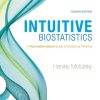
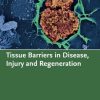

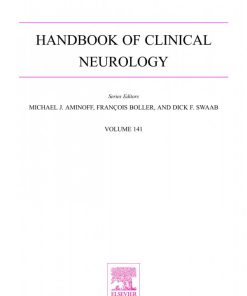


![Discrete Time Signal Processing: Pearson New International Edition [Print Replica] (Ebook PDF)](https://ebookmass.com/wp-content/uploads/2024/01/51L7zm84cFL-247x296.jpg)
